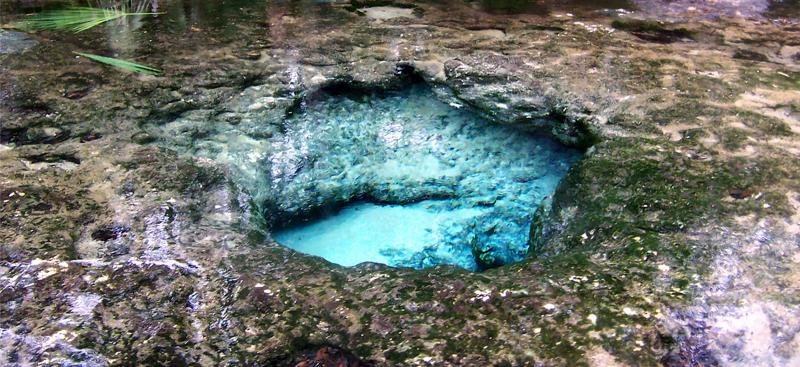What springs are located within our District?
There are more than 200 springs within the District. There are five first-magnitude spring groups in the District. First-magnitude springs, which are the largest springs by volume of water discharged, release 64.6 million gallons per day or more. The five springs are: Rainbow River, Crystal River/Kings Bay, Homosassa River, Chassahowitzka River and Weeki Wachee River. Together, they discharge more than one billion gallons of water per day. These five first-magnitude springs are in or discharge to an area known as the Springs Coast.
What does the District do to protect springs?
Since each spring system is unique and complex, the District uses a variety of techniques such as regulation, monitoring, research and development, restoration and education to address each system’s challenges.
Do groundwater withdrawals affect spring flows?
Rainfall has the biggest impact on flows in the District’s five first-magnitude springs. Groundwater withdrawals also can affect spring flows, but aquifer levels and groundwater use have remained stable in the Springs Coast region. To ensure that groundwater withdrawals don’t cause significant harm, the District establishes minimum flows (MFLs) and follows water use permitting rules to protect our first-magnitude springs from too much groundwater use.
What is an MFL?
MFLs are defined by Florida law as the limit at which further withdrawals would be significantly harmful to the water resources or ecology of the area.
How is an MFL determined?
District scientists use the best available information for developing a proposed MFL. This information can include historical water levels and flow rates, fish, wildlife and vegetation data, water quality data and advanced computer models. Proposed MFLs for springs and the data and methods used for their development are evaluated by an independent scientific peer review panel before the MFLs are adopted as District rules.
Does the District sell spring water to bottling companies?
The District issues water use permits to applicants wanting to bottle water when they meet the required conditions. The District follows rules established in Florida Statutes and the Florida Administrative Code when reviewing and issuing all permits for water use. Among other criteria, the water use permit application review includes an analysis to prevent environmental harm and ensure established MFLs are not exceeded. It also confirms water uses are reasonable and beneficial for the proposed use as outlined in Florida law.
Do bottling companies receive additional consideration when the District issues water use permits?
Based on Florida law, water use by the public, commercial entities and agriculture are all treated the same if the applicants meet the required conditions for a water use permit. For example, Florida law treats a permit for a bottled water company the same as a permit for a beer brewing company or for a farmer watering his tomato crops.
What portion of water use permits goes to bottled water?
Within our District, bottled water accounts for less than 1 percent of the total water use permitted in the District. For comparison, 17 percent of total water use permitted in the District is for residential lawn irrigation.
What affects the water quality of a spring?
Many factors impact water quality including nutrients. Nutrients, such as nitrogen and phosphorus, are essential for life, but in excess, can be harmful to aquatic plants and wildlife. Excess nutrients are attributed to several factors, including septic tanks, stormwater runoff and residential fertilizer. For example, septic tanks contribute up to 40 percent of the current nitrogen pollution in the District's five first-magnitude springs.
Can recreation have an impact on springs?
An ecological study found direct links between recreational activities and environmental impacts. For example, visitors who leave their kayaks, canoes and boats may trample vegetation and erode riverbanks and sand point bars. Also, those who climb or jump/swing from trees can damage the trees.
What can I do to protect the springs?
There are numerous ways residents and visitors can help protect the springs such as conservation, nutrient reduction and responsible recreation. Visit the Protecting Florida’s Springs page for more tips.

